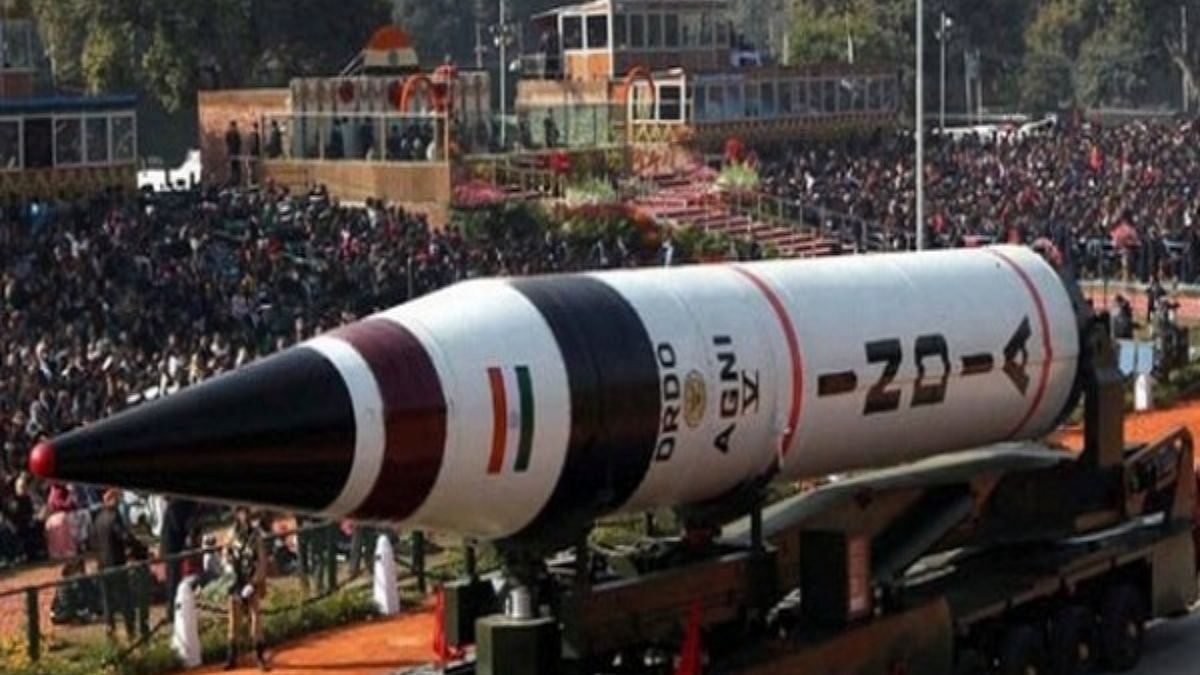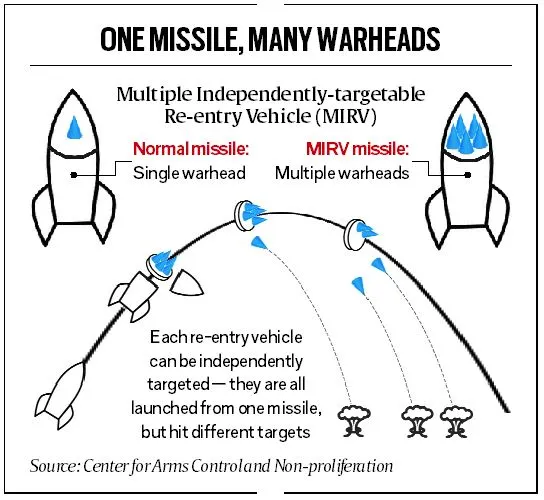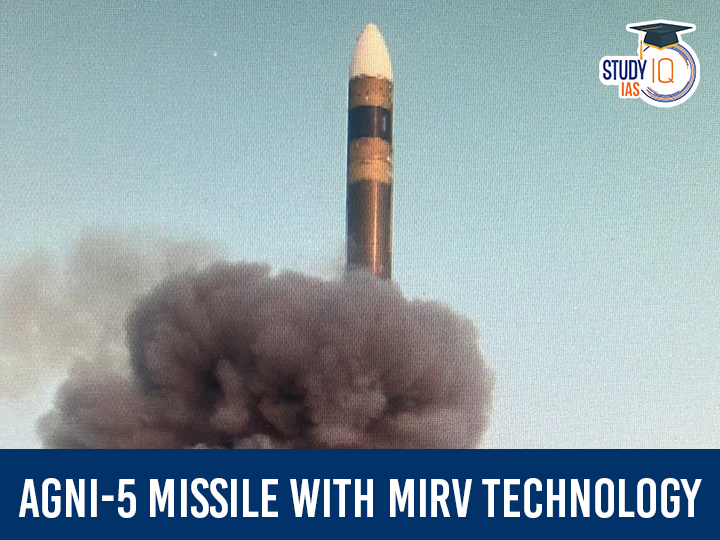Table of Contents
Context: India successfully tested an Agni missile capable of carrying multiple warheads meant to hit multiple targets simultaneously (Mission Divyastra).
About Agni-5 Missiles
- Type: The Agni-5 missile is an advanced, long-range missile, surface-to-surface ballistic missile.
- Developed by: Defence Research and Development Organisation (DRDO).
- It represents the latest variant in the Agni series, which has been part of the Indian armed forces’ arsenal since the early 1990s.
- Technology: This missile is equipped with Multiple Independently Targetable Re-entry Vehicle (MIRV)

- Capabilities:
- The Agni-5 has a range of more than 5,000 km, categorising it as a long-range missile.
- It is capable of carrying nuclear warheads, enhancing India’s strategic deterrence capabilities, particularly with regard to the potential threat posed by China.
About MIRV Technology
Function
MIRV stands for Multiple Independently Targetable Re-entry Vehicle.
- This technology enables a single missile to carry multiple warheads, each of which can be directed towards a different target.
- The targets can be spaced hundreds of kilometres apart, making MIRV-equipped missiles highly versatile and effective strategic weapons.

- Strategic Advantage: The deployment of MIRV technology allows a country to strike multiple targets simultaneously or to overcome missile defence systems by saturating them with multiple incoming warheads.
- Global Presence: Currently, the technology is possessed by a select group of countries, including the United States, Russia, China, France, and the United Kingdom, all of which have MIRV-equipped missiles.
- These missiles can be launched from various platforms, including land-based silos and submarines.
- Pakistan is in the process of developing its own MIRV-capable missile system.
- Similarly, Israel is suspected of either possessing or developing such technology, although specific details may not be publicly available.
We’re now on WhatsApp. Click to Join
Difference Between Cruise And Ballistic Missiles
| Aspect | Cruise Missile | Ballistic Missile |
| Flight Path | Low-level, terrain-hugging, within the atmosphere | High arcing, parabolic trajectory, exits and re-enters atmosphere |
| Propulsion | Jet engine, sustained propulsion throughout flight | Rocket boosters, propelled initially, coasts without propulsion mid-flight |
| Guidance Systems | Advanced guidance with GPS, inertial, TERCOM or image-based systems | Inertial, sometimes with star sighting or GPS, terminal phase guidance |
| Speed and Altitude | Generally subsonic or supersonic, flies at lower altitudes | Hypersonic speeds, reaches extremely high altitudes |
| Defensive Countermeasures | Hard to detect due to low altitude and potential for stealth technology | Easier to detect at launch, difficult interception due to speed and trajectory |
| Purpose and Use | Precision strikes against specific targets requiring controlled flight paths | Delivery of strategic payloads, including nuclear, across continents |
| Examples (India) | BrahMos, Nirbhay | Prithvi I, Prithvi II, Agni I, Agni II and Dhanush missiles. |


 SSC MTS Salary 2025, Check Highest Salar...
SSC MTS Salary 2025, Check Highest Salar...
 F-35 Fighter Jet Stranded in Kerala: Dis...
F-35 Fighter Jet Stranded in Kerala: Dis...
 Quad Summit 2025: Key Announcements, Str...
Quad Summit 2025: Key Announcements, Str...





















